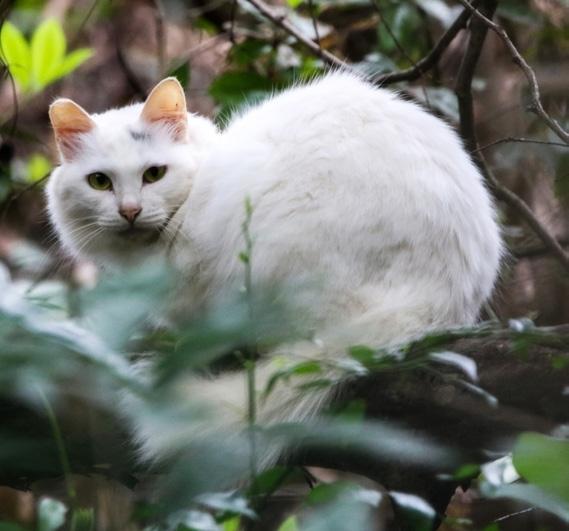
AS controversial as it may be, and whether we like them or not, domestic cats (Felis catus) have to be considered part of our city’s biodiversity due to their increasing population. We refer here to stray and feral cats, not owned pets, although the latter can become part of the numbers if they are abandoned or have managed to run away. A feral cat refers to those cats that mainly live in the wild and have had no contact with humans. In contrast, stray cats refer to those who previously had contact with people and are accustomed to being around them. Over time, a stray cat can eventually become feral. Cats are carnivorous mammals and belong to the family of felines, with lions, tigers, cheetahs and pumas among their relatives. In Shenzhen, the leopard cat is their closest relative. Domestic cats are relatively small in size compared with other felines. They grow up to 45 centimeters in length, with males bigger than females. There are wide variations among them, due to hundreds of years of genetic manipulation by artificial breeding. Cats reach their adult size when they are about 10 months old, but a female cat becomes sexually mature at four months old. It shows estrus behaviors several times a year, and therefore can have multiple litters each year. Gestation lasts about two months for a pregnant female, which may give birth to up to three or four kittens per litter. Cats are highly effective predators and obligated carnivores, meaning that animals are their only food source. A recent study conducted in China estimates that feral cats annually consume billions of frogs, birds, lizards, fish, squirrels, mice, snakes and other small animals in their surroundings. It is a widespread myth that cats are natural predators of rodents and mitigate rat problems in the city. Truth is, cats do not commonly kill rats or reduce rat populations, because rats do not come out in the presence of cats. With rat populations stably growing in cities, some cities such as Chicago introduced dozens of cats to control rats but to no avail. In another study, scientists revealed that in parks with stray cats, rat populations even increased due their access to available food that people left for the cats. Cats are not a natural part of our ecosystems; it is our responsibility to intelligently deal with this issue. We can start by not feeding stray cats, not releasing cats into the wild, and preventing owned cats from wandering and reproducing. By encouraging a decline in their numbers, we can better protect our local wildlife from these unwanted predators. | 
